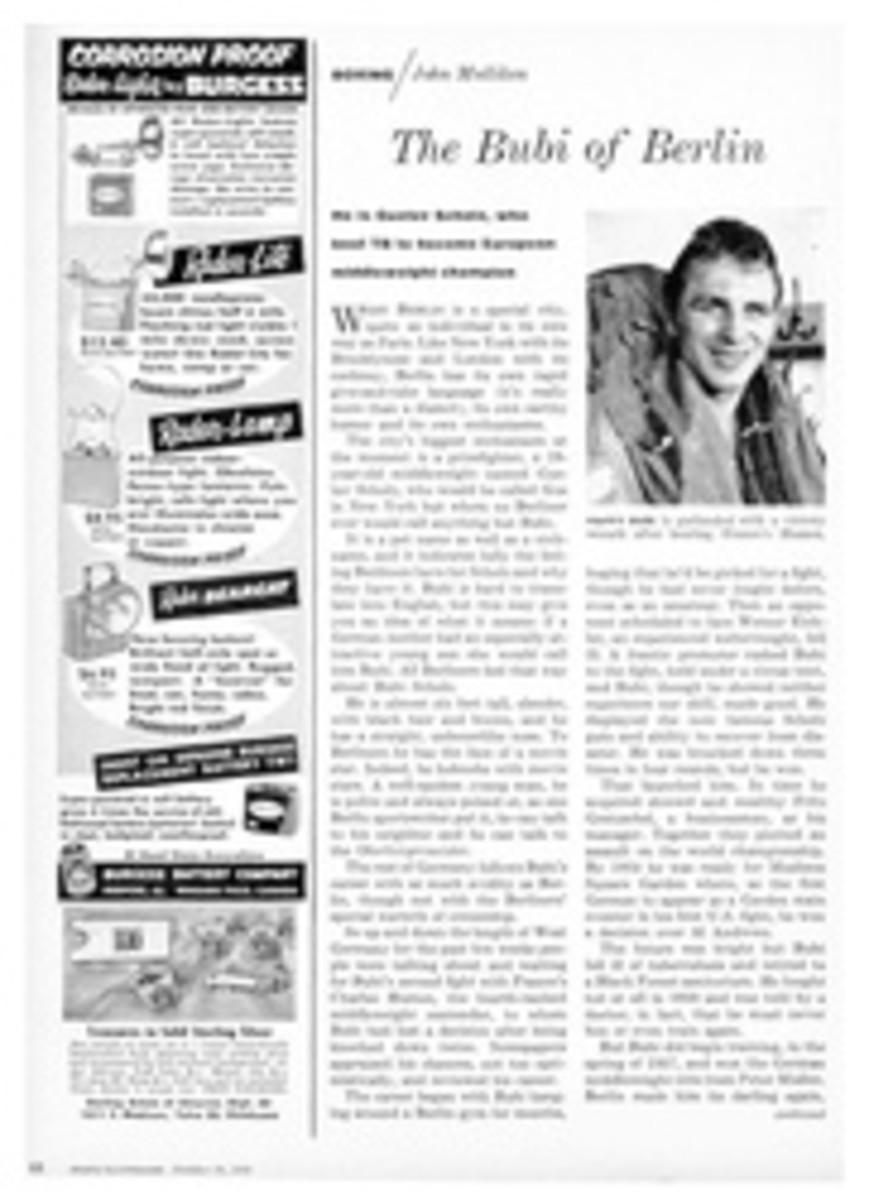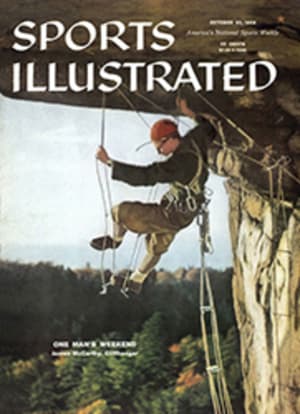
A lady in a man's game
On a cold, rainy November morning in 1921 a small crowd gathered to watch Gwenda Hawkes, a slight, intense young Englishwoman, confidently straddle a curious two-wheeled American machine called a Ner-a-car, which belied its pretensions to close relationship with the automobile by its appearance. At best it was a mere motorized scooter. It ran on all of one cylinder and its only means of stopping was a single rear-wheel brake. Under official scrutiny in daily runs of 190 miles, Mrs. Hawkes miraculously survived 1,000 grueling miles on the fragile machine over icy roads without a spill or breakdown. And although the failure of the Ner-a-car to attract British customers was no fault of Mrs. Hawkes, there is no doubt that any asset it may have had was overshadowed by this amazing performance.
This was precisely the kind of challenge Mrs. Hawkes (whose name in those days was Stewart) liked best. It was unusual, a little mad, and it was equal to anything any man had ever performed on the same machine—an accomplishment that she found especially satisfying. Too, it was an endurance record of its kind; and a record in Mrs. Hawkes's lexicon was something that was either to be established or shattered—preferably by herself. Her ability to do both is now racing history.
Some of Mrs. Hawkes's records stand today; the five-mile and 10-mile (at 140.17 mph and 138.34 mph), set in a Derby-Miller at France's Montlhéry track in 1933 and 1934. Others were only recently broken. Her 10-and 50-mile records (at 105 mph and 104.5 mph), set in an 1,100 cc. Morgan Three-Wheeler in 1931, were not topped until 1954. In the following year her record run on the Morgan for five miles, flying start, at 110.5 mph, finally gave way. And in 1956 her remaining Morgan record, set at Montlhéry for 100 miles, standing start, at 102 mph, was broken by the daredevil Murit on a BMW motorcycle and sidecar. Men, in each case, broke her records.
In the early days of her racing career Mrs. Hawkes preferred, the motorcycle, a machine of great prestige at the time. A year after the Ner-a-car episode, she rode a 2-hp Trump-J.A.P. continuously around England's two-mile Brooklands track for 24 hours at an average speed of 44.65 mph. The time was clocked in two periods of 12 hours because the Brooklands neighbors complained vigorously about the noise when racing went on through the night. This was the first time a mark of the kind had been set. Considering that Brooklands has always been a rough track and motorcycles of the day were not blessed with hydraulic shock absorbers, the feat is remarkable. At sundown on the second day, a crowd assembled to welcome Mrs. Hawkes as she rode beneath Members' Bridge. She was lifted off the machine and carried off on the shoulders of a cheering and appreciative mob.
In 1925 she again distinguished herself, this time at the Montlhéry track, with the assistance of racing enthusiast Colonel R. N. Stewart, at the time her husband and partner. Dressed in a sporty blue Sidcot suit and crash helmet, she dropped the clutch on a 346 cc. Rudge motorcycle and streaked off down the straightaway averaging one minute 40 seconds to the lap for two exhausting hours. She then turned into the pits, where Stewart refueled and took the handle bars himself for a two-hour spin. They rode two hours on and two hours off until shortly after 10 o'clock the next morning. By this time they had set a new track record at Montlhéry, had broken 21 long-distance motorcycle records and all marks in their class.
In search of still more adventure, Mrs. Hawkes turned to automobiles in the beginning of the '30s. On a day in December 1930 she brought glory to the Derby-Miller with a record for 10 miles, standing start, at 137 mph. She achieved this startling performance in a relatively tiny car (2,000 cc, two-thirds the size of a Chevy 6). The previous record holder had been Leon Duray, an American, behind the wheel of a Packard. Indianapolis drivers today aren't driving much faster, and their equipment and track are considered far superior.
Five years later at Brooklands Mrs. Hawkes became the first woman to circle the track at more than 130 mph. In 1936, in one of her rare appearances in a race, she teamed with George Duller in a Duesenberg at Brooklands and took an incredible seventh place in the British Racing Drivers 500, an event which is in all respects as torturous and demanding as the U.S.'s own Indianapolis "500."
Despite these successes, for the most part Mrs. Hawkes shunned public competition. She preferred to race records rather than drivers. Records to her were cold facts, with no regard to sex. They could be challenged alone on the track.
Daughter of Major General Sir Frederic Manley Glubb, who so distinguished himself in World War I that he was promoted in the field, and sister of Glubb Pasha of the Arab Legion, a world-famous adventurer, Mrs. Hawkes was encouraged, and perhaps challenged, by her family background. She herself drove an ambulance during the war through dangerous territory and was given the Cross of St. George and the Cross of St. Stanislaus. And yet this was little compensation for a girl who desperately wanted to triumph over man-made goals.
Never renowned for her beauty—as was her nearest competitor, Kay Petre—Gwenda Janson Stewart Hawkes nevertheless married three times, and always to men who shared her love for any machine on wheels. Her first husband, an army colonel named Janson, was with the Spyker auto company. Colonel Stewart was the managing director of Trump Motorcycles; her present husband, Douglas Hawkes, besides being a designer and engineer of some note, drove in the Indianapolis "500" and the tough Tourist Trophy.
RETREAT TO GAUL
The Hawkeses settled for many years in France, a country that takes its motoring seriously and where Mrs. Hawkes's reputation is well established. Living in a comfortable bungalow so near the Montlhéry track that the roar of the motors could always be heard, they set up a small factory to produce the front-wheel-drive Derby sports car. In a Derby Special Mrs. Hawkes shocked even herself when she began a lonely day's work, gradually gathered speed and then actually beat the lap record at an average of 145.94 mph. A month later she made a sensational run pushing the car up to 147.67 mph for a new Montlhéry lap record. When this record was finally broken, it was exceeded by less than one mile per hour in a car half again as large. A man, of course, broke the record.
During World War II the Hawkeses confined themselves to the business of pistons and valves. With the war over, they turned from racing motorcycles and automobiles to yachting. They bought a yawl, Elpis, which they immediately accepted as a challenge. In search of the same kind of perfection with sails as they had achieved with motors, the Hawkeses sail the Mediterranean. But there is a difference these days. A mellowed Gwenda Hawkes is no longer in stern competition with men. And her boat is real—not one of your fly-by-night Ner-a-boats.
PHOTO
AT SUCCESSFUL 1935 race, Mrs. Hawkes stands alongside favorite Derby-Miller.

